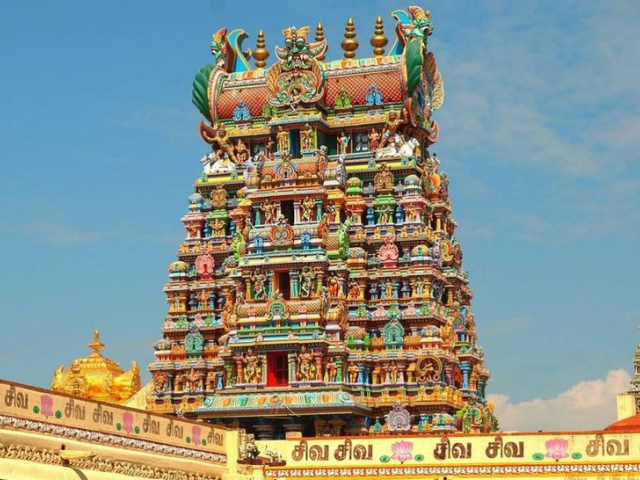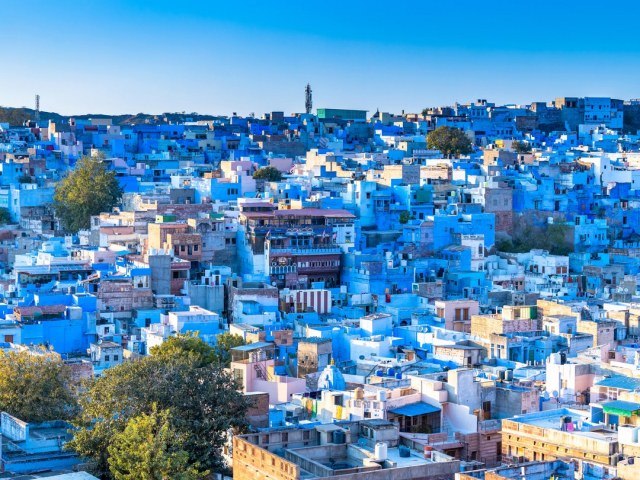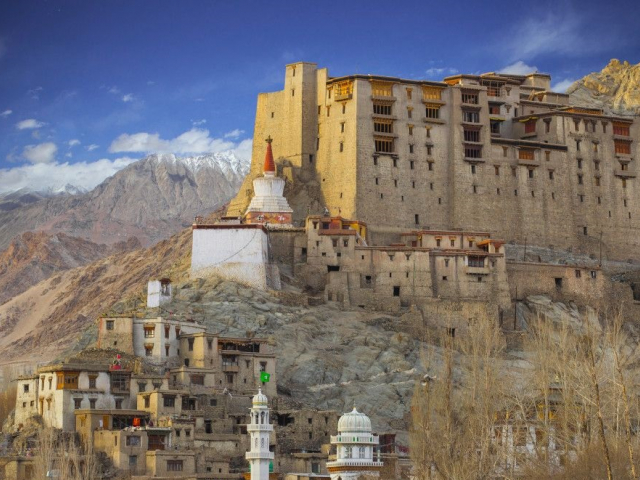
India, a fascinating Asian country, captivates with its vibrant culture and ancient history. Many travelers dream of visiting to witness the contrast between Eastern and Western traditions. Let us take you on a journey through some of the most extraordinary locations in vibrant India.

Meenakshi Amman Temple
One of India’s most striking and impressive landmarks is the Meenakshi Amman Temple. Located in the southeastern state of Tamil Nadu, in the city of Madurai, one of the oldest continuously inhabited cities in the world, with over two thousand years of history. This temple complex is guarded by unusual towers called gopurams. The tallest is the southern tower, built in 1559, while the eastern tower, constructed in 1216, is considered the oldest. The Meenakshi Amman Temple attracts countless tourists from around the world.

The Blue City (Jodhpur)
Many travelers are willing to cross the Thar Desert in Rajasthan to reach the unique city of Jodhpur. “It feels like the sky has fallen to the ground and everything has turned blue,” visitors often say. Experts call Jodhpur the blue jewel of the desert. One explanation for the city’s blue hue is linked to India’s caste system: homes painted in shades of blue are typically those of Brahmins, the highest caste, distinguishing them from others.

Leh Palace
The magnificent Leh Palace was built in the early 17th century by Sengge Namgyal, king of the Ladakh Kingdom. It stands atop the Himalayas in the city of Leh, which is now the Indian union territory of Jammu and Kashmir. The palace remained in royal hands until the dynasty was overthrown and exiled in 1834. It was later abandoned but has since been restored. Today, it towers over a region often referred to as “Little Tibet.” The palace is believed to have been modeled after Tibet’s Potala Palace, which was the Dalai Lama’s residence until 1959. Although smaller, Leh Palace’s nine-story structure is still impressive. The upper floors were occupied by King Namgyal and his court, while the lower floors housed servants, storage rooms, and stables.
Living Root Bridges of Meghalaya
There are still places in India that remain nearly inaccessible, such as the state of Meghalaya in the country’s northeast, surrounded by subtropical forests. To navigate the terrain, locals have developed an ingenious form of natural engineering—living bridges made from tree roots. Frequent rains make river crossings dangerous, so people use the sturdy roots of large trees to get across. The combination of heavy rainfall, steep terrain, and dense forests turns much of Meghalaya into an impassable jungle. In response, local communities created a unique system of natural suspension bridges.
Lotus Temple (Delhi)
India is often called the land of a thousand religions, home to many spiritual traditions. Among them is the Baháʼí faith, one of the youngest religions, which arrived in India from Iran in the 19th century. The center of the Baháʼí community in India is the Lotus Temple in Delhi. Built in 1986, this structure is made of white marble and shaped like a blooming lotus flower. Its unique architecture and expansive park grounds have made it one of India’s most visited landmarks, attracting around 4 million visitors annually.
Red Fort (Agra)
A key architectural monument in the city of Agra is the palace-fortress complex known as the Red Fort. Construction of its fortifications, palaces, mosques, and gardens began in the second half of the 16th century. It was founded by Akbar the Great, ruler of the Mughal Empire, who decided to move the capital to Agra. The fort was built primarily from Rajasthani red sandstone, giving it its rich red-burgundy color. Over its 450-year history, the Red Fort has hosted many prominent figures and witnessed numerous battles. Today, it is recognized as an important example of both Islamic and Hindu architecture.